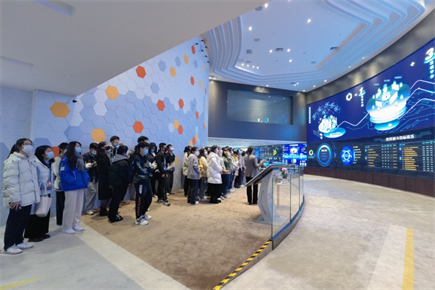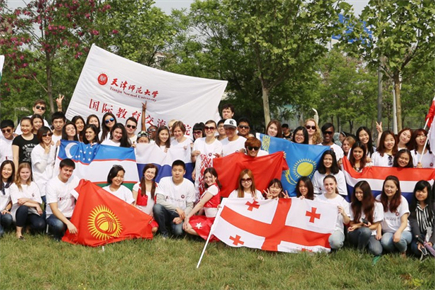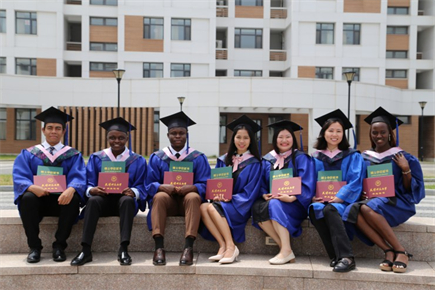A pioneering study titled "Full utilization of noble metals by atom abstraction for propane dehydrogenation" was published online in the journal Science on September 26. The research introduces a novel "atom abstraction" strategy that achieves near-complete utilization of precious metal atoms in catalysts, paving the way for more sustainable and efficient chemical manufacturing. This publication marks a significant milestone for Tianjin Normal University (TNU), representing its first appearance as the corresponding institution in Science.
Catalysts are hailed as the "heart" of the modern chemical industry. Noble metals are their critical yet costly components, and efficient usage is the key bottleneck in developing greener industrial processes. With the global noble metal catalyst market approaching 200 billion yuan ($28.03 billion) in 2024, maximizing their atomic efficiency has become a major frontier in international scientific competition.
A critical limitation of traditional catalysts is the tendency of noble metal atoms to aggregate into larger particles, burying many atoms inside where they cannot participate in surface reactions. This issue is particularly acute in propane dehydrogenation (PDH), a key process for producing propylene—a foundational chemical for plastics, rubber, fibers, and pharmaceuticals. In 2024, China accounted for over one-third of the global propylene output (valued at over 600 billion yuan), with approximately two-thirds of PDH processes relying on noble metal catalysts hampered by low atom utilization and high cost, severely constraining the industry's sustainable development.
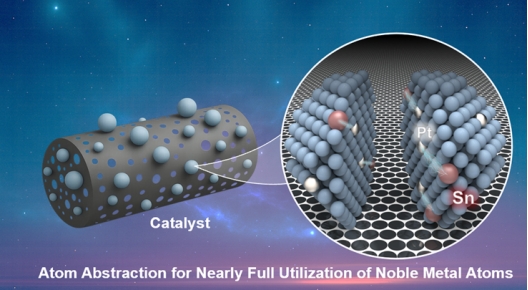
To address this challenge, Professor Gong Jinlong's team, after nearly a decade of dedicated research, developed a groundbreaking "atom abstraction" technique. The strategy involves introducing tin (Sn) atoms into a platinum-copper (PtCu) single-atom alloy. The larger atomic radius of Sn causes these atoms to preferentially segregate to the surface of copper (Cu) nanoparticles. The stronger interaction between Pt and Sn then acts to pullthe initially embedded Pt atoms to the surface, where they remain stable in a metallic state. This approach achieves almost 100 percent surface dispersion of the noble metal. Under industrially relevant PDH conditions, the developed catalyst, containing only one-tenth the platinum of commercial analogues, demonstrates comparable activity alongside superior stability and selectivity. Mechanistic studies reveal that the Pt-Sn interaction is stronger than Pt-Cu and Sn-Cu bonds, significantly driving Pt surface migration. This surface structure also facilitates the desorption of reaction intermediates and suppresses deep dehydrogenation pathways, thereby enhancing selectivity. This breakthrough successfully resolves the long-standing bottlenecks of high catalyst cost and heavy reliance on scarce noble metals in the propylene industry, providing crucial technological support for a transition towards a more efficient and greener chemical sector.
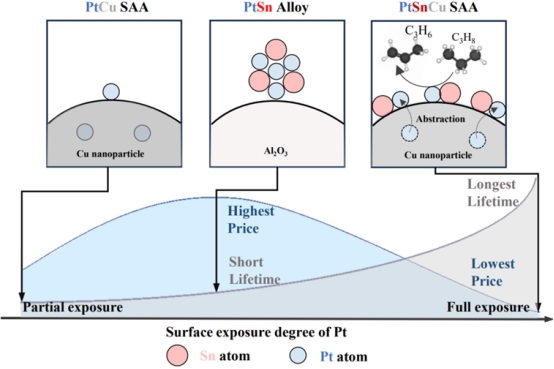
According to Dr. Sun Guodong, a co-first author of the paper from the School of Chemical Engineering and Technology at Tianjin University, "Our team will deepen its commitment to the field of olefin production technology, aiding China in mastering the core proprietary technologies for next-generation catalysts and steering the chemical industry toward a more environmentally friendly, efficient, and sustainable future."
This research, led by Tianjin University, charts a cost-effective and sustainable technological path for propylene production and the broader chemical industry. It marks a breakthrough by China at the global forefront of catalytic science and technology, providing a pivotal tool to safeguard national energy security, accelerate the green transition, and achieve the "dual carbon" goals. This achievement showcases China's substantial and deep-rooted expertise in the foundational research of low-carbon chemical engineering.
By He Jierui


